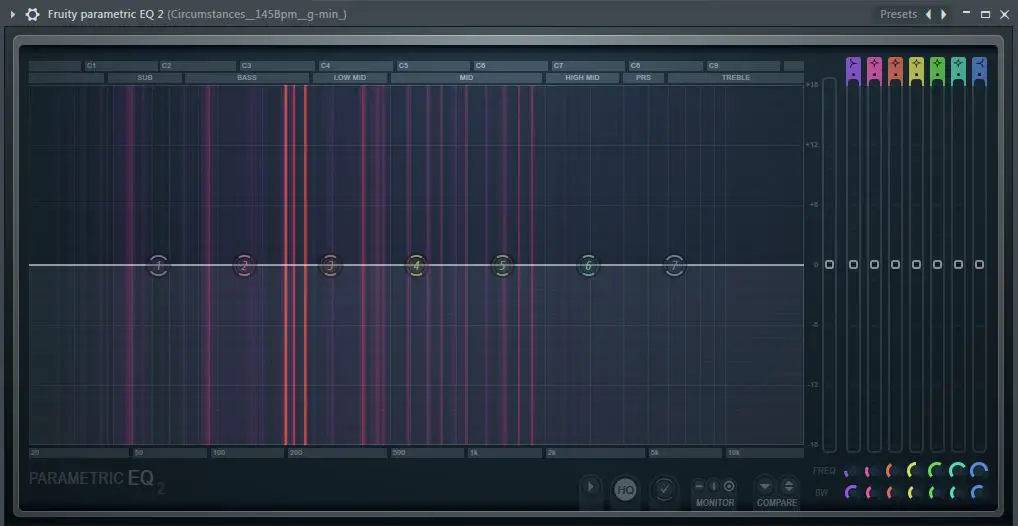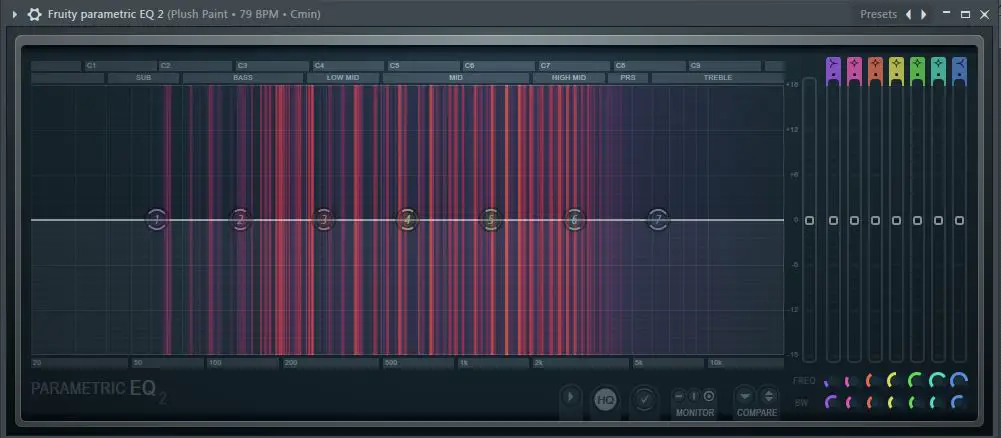Getting a firm understanding of frequencies when you’re beginning your music production journey is very important.
Equalization being one of the most important elements of music production,
understanding and being able to use a frequency analyser is a prerequisite
for any mixing and/or mastering.
The easiest way to read the frequency of any sound or any audio is by using a Frequency Spectrum Analyser, there are a lot of them available online. Most Equalization Plugins come equipped with a frequency editor and analyser that you can use to adjust any frequencies that you want to.

This post will give you a brief introduction into frequencies and how to understand them better.
what is Frequency in music?
Frequency with regard to music is the speed of a sound’s oscillation, it is what we human beings hear as pitch.
A slowly vibrating sound wave will sound lower in pitch while a faster vibrating sound will sound much higher in pitch and the unit used to measure frequency is Hertz (Hz).
Hertz is simply the number of cycles per second.
a 1000 Hertz completes a full cycle which is 1 millisecond.
How to read the EQ frequencies
Reading EQ frequencies is pretty easy because all it takes is a good Spectrum Analyzer or EQ plugin and a good set of eyes.
When you run a sound through your EQ plugin or Analyser,
you’ll get the frequencies to show and you’ll basically get to see what part of
the frequency range the audio you’re running the plugin takes up.

Any EQ or Spectrum Analyzer plugin will have an indication of the various frequency ranges.
You’ll notice numbers associated with the frequencies.
Those numbers are the numbers that represent the frequency and it is pretty much what you use to read it.
The numbers you need to look for:
50HZ
– You boost these frequencies to add more fullness to the lowest frequency instruments like kick, toms and bass drums.
– Reduce or cut these frequencies to decrease the “boom” of the bass. Here are some reasons why your bass may sound boomy and how you can fix it.
100HZ
– When boosted, these frequencies add a harder bass sound to lowest frequency instruments.
– Can also be used to add fullness to guitars.
– boost this frequncy area will add warmth to a sound.
– This Frequency is usually cut in order to give room other sounds within a mix.
200HZ
– a boost of this frequency will add fullness to vocals.
– This is the frequency area that has to be cut in order to decrease muddiness of a mix. (Learn more about muddy frequencies)
400HZ
– A boost of this frequency area will add clarity to basslines.
– An over increase of this frequency area can increase ambience on cymbals.
800HZ
– This is the go to frequency area if you’re looking for for clarity and quick attack of bass.
1.5KHZ
– A good boost of this frequency will improve the clarity and pluck of bass.
3KHZ
– A boost can can give you more pluck of bass.
– a cut of this frequency area can be used to disguise out of tune vocals.
5KHZ
– This frequency area is great for providing presence
7KHZ
– a boost of this frequency will add attack on low frequency drums.
– a Reduction can be used to decrease sibilance.
10KHZ
– a boost of this range can be used to brighten vocals.
– Reduce to decrease sibalence.
15KHZ
– Increase to brighten vocals (breath sound).
– Increase to brighten cymbals, string instruments and flutes.
– Increase to make sampled synthesizers sound more real
Related Articles
How to Use EQ: 10 Amazing Tips for a Professional Mix – Musician On A Mission
What Frequency Range Are Vocals?
Equalization 101: Everything Musicians Need to Know About EQ – Landr
Does Audio Engineering Require Math?
6 thoughts on “How Do You Read EQ Frequencies?”